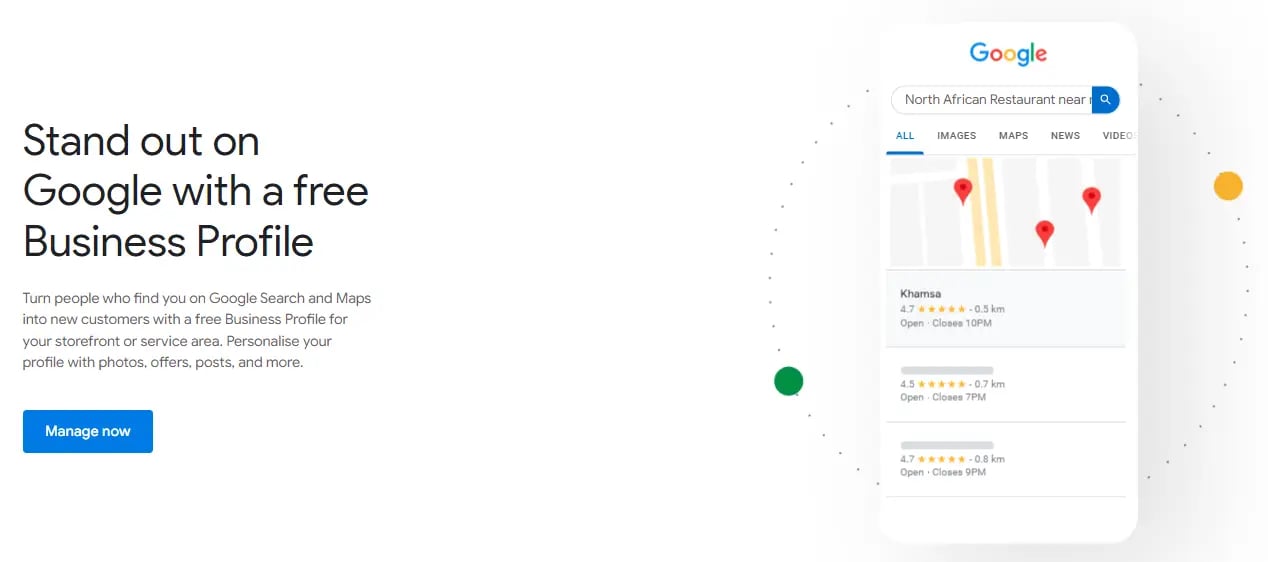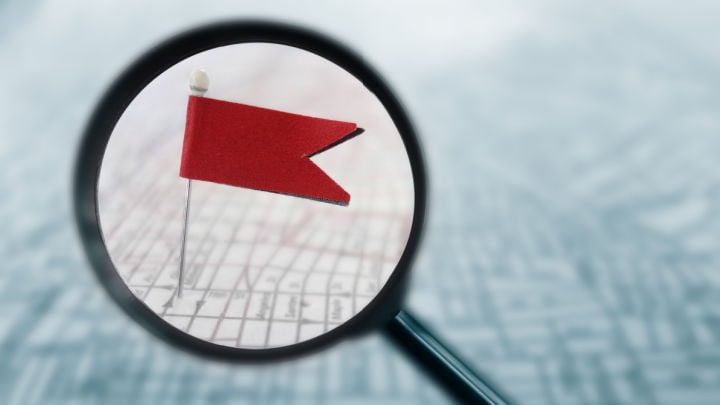What is the Trusted Shops Community of Trust?
What is the Community of Trust? How do you gain access to the 45 million shoppers in it? And how do you improve your conversions, AOV, and more?

Before the advent of the internet, if a shopper didn't know where your shop was located or what you sold, it would be difficult to classify them as a potential customer. Improving brand awareness was achieved through local ads or word-of-mouth advertising. These days, Google has taken over much of these tasks. In this blog post, you'll find out how you can make your local shop easier to find for your target audience.
Assuming you have a website for your local shop (you really should!), optimising your website with local SEO has several benefits:
Your local shop is easier to find. Smartphones are increasingly used to search for nearby businesses – be it a copy shop, a coffee house, or a shoe shop. Taking advantage of such local search queries can lead to a great number of interested customers visiting your shop. The expression "location, location, location" has always referenced the physical location of your shop. Now, your "real estate" on Google can be considered just as important if not more so.
You differentiate yourself from the competition. If your local business is located in the busiest shopping area of the city (e.g. Carnaby Street in London) and the competition is all around you, you need to take advantage of the tiniest opportunities to acquire new customers. However, even if your local business is located in a quieter area, local SEO can make the difference in enabling potential customers to discover your shop.
Online and offline shopping are harmonised. Customers having visited your offline shop are very much likely to turn into online customers, too, because they can associate real people with your shop instead of having to deal with an anonymous, large, multinational company – that’s the huge advantage you have over Amazon & Co.
With regard to SEO, local competition is less fierce than competition involving general search queries, where the entire world is your competition.
When a customer enters the search query “shoe shop”, Google will show local results in the search results. Therefore, it's easier to be found since results of nearby shops are shown. In other words, you don’t need to compete with all shoe shops in the UK, but only with your local competitors.
Here is a checklist you can work through to jump past the competition.
Recommended reading:
Digital Strategies to Boost Foot Traffic to Local Businesses
If you haven’t registered with Google Business Profile (formerly known as Google My Business) yet and you own a local business, then you’re disregarding one of the best ways to win over new customers free of charge.

Therefore: register now, fill out your profile and wait for the confirmation. For a great overview on getting started with Google Business Profile, download our whitepaper:
You should take advantage of Google’s love for content. Informing potential customers about local events enables you to increase the local relevance of your website, which in turn may lead to a ranking improvement.
Apart from local events, you may want to present or test new products, publish customer feedback, or simply write an article about your shop. The fiercer the competition, the more frequently you should publish a blog post.
We recommend you regularly take some time to write blog posts and plan them over several days. Hardly any of your competitors will take the time to blog, so there's a good chance you’ll be the only one to adopt this marketing strategy.
Apart from writing a blog, you may also want to use other media. Images and videos bring life to your articles and can be posted on Facebook and Instagram at the same time.
You’ll thus kill two birds with one stone, because potential customers search for interesting local shops on social media, too. Make sure to use local hashtags!
If possible, you should add your company name and location in the title of your website. Instead of using Peter's Shoe Shop, you should instead choose Peter's Shoe Shop of London as the title of the page. A small optimisation trick like that can really give your ranking a slight boost.
Recommended reading:
Advertising Your Local Business on Waze
If you are familiar with SEO, you’ve certainly come across the topic of link building.
Google ranks websites through links and this continues to be a decisive ranking factor.
That’s why links from important websites like theguardian.com, bbc.co.uk or independent.co.uk are so valuable and have a positive impact on your ranking. Those are obviously extreme examples. They are not necessary to get to the top of the search results pages with your local SEO.
You should rather bank on local links. To obtain local links, you may want to cooperate with local bloggers, promote an event, write a guest article (in exchange for those backlinks) or publish articles in (smaller) local newspapers.
It's also recommended to sign up for pertinent business directories to get free and valuable links. FlycastMedia created a PDF with best practices and shortcuts to the most important (UK) directories.
With the help of meta tags, you can show search engines what your website is all about. That’s why you should include not only the most important keywords (shoe shop, buy shoes, etc.), but also the location of your shop in your meta tags.
In most cases, a shop with a great number of positive reviews ranks first in organic search results.
It’s not by chance that Google sends every newly registered user a shop window sticker asking customers to Submit a review on Google. Encourage the customers buying from your local shop to leave a review on Google (or a Google-certified reviews partner like Trusted Shops) and benefit from a higher likelihood to be found.
Don’t worry too much if a customer doesn’t award you 5 stars. Indeed, a shop with only 5-star reviews is quickly regarded as dubious – an average rate of 4.X looks much more natural and trustworthy.
One of the oldest SEO strategies is entering your shop in lists. Even though these links no longer have the power they had a few years ago, they still help you improve your ranking if you choose the right ones.
This is not necessarily due to the links, but rather because your address is no longer mentioned solely on your own website. This makes your website look more trustworthy to the eyes of Google and shows that your local shop does actually exist in a real place.
For every sector there are other (relevant) lists, but online yellow pages and directories (e.g. Yelp, Foursquare, etc.) are interesting for any kind of business.

Shutterstock/zimmytws
Your company name, address, and telephone number should be easily found throughout your website. Your contact data must always be exactly the same across the different pages of your website and on different databases (e.g. the lists mentioned above or Google Business Profile) .
For example, if you inserted your business to Google Business Profile by indicating 21 Oxford Street as your address, then you should always write the address exactly the same way to benefit from the ranking bonus.
Be it on your website, in lists, or elsewhere, your contact information must always be consistent!
As you can see, it’s not that difficult to be found locally. All you need to do is:
regularly publish new blog posts;
use pictures and videos (blog/social media with the right keywords and hasthags);
cooperate with local bloggers and companies (link building);
mention your location in metadata, in the title of your website, and on Google Business Profile
add your business to relevant lists;
make sure your company name, address, and telephone number are consistent throughout your internet presence;
collect customer reviews that can be found on Google
If you follow these seven rules, you'll soon be able to welcome new customers who found you online to your local shop. Good luck!
18/08/21What is the Community of Trust? How do you gain access to the 45 million shoppers in it? And how do you improve your conversions, AOV, and more?
Your homepage has a few seconds to make or break a sale. Learn the essential homepage best practices that build trust and turn visitors into customers.